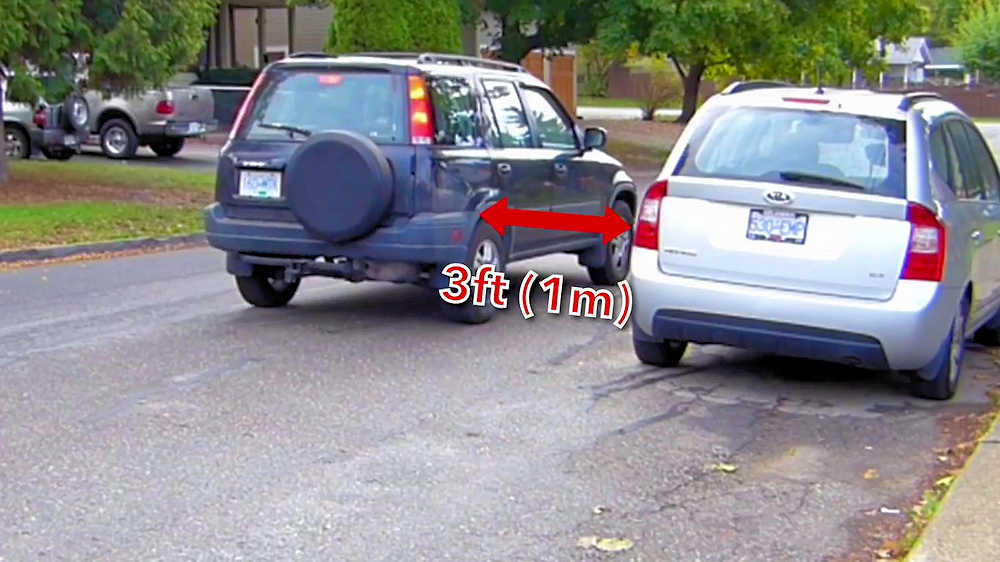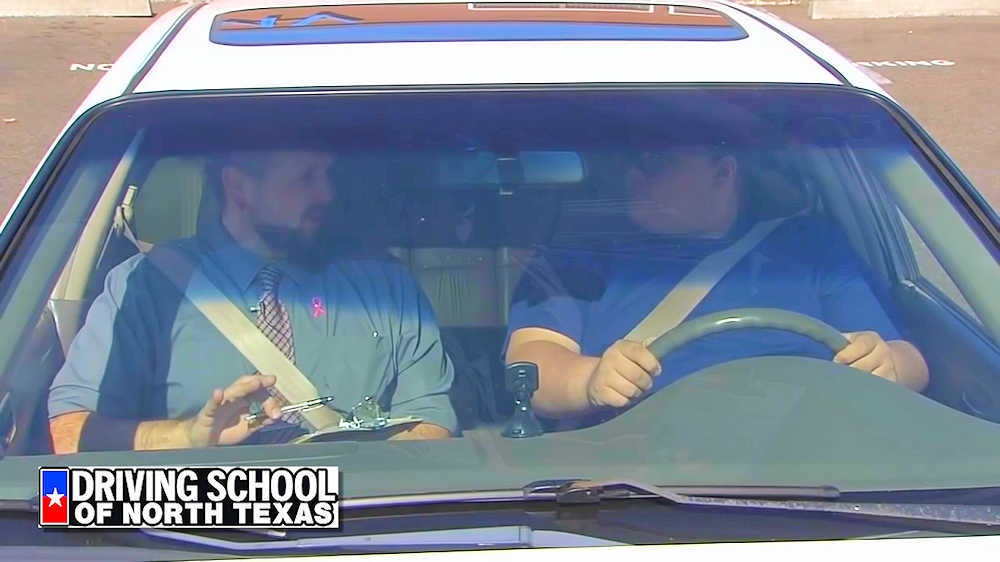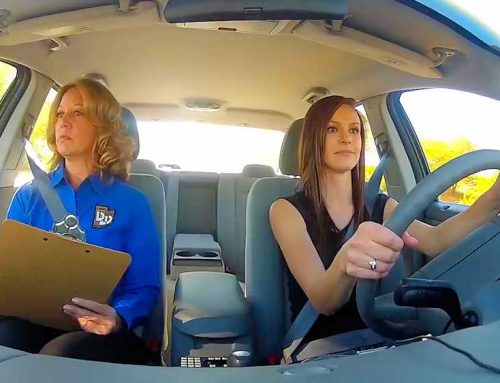Table of contents
- Key Takeaways
- Basic Car Controls and Operation
- Understanding Traffic Laws and Road Signs
- Safe Driving Practices
- Defensive Driving Techniques
- Navigating Different Types of Roadways
- Dealing with Hazardous Conditions
- Driver and Vehicle Maintenance
- Frequently Asked Questions
- How can I overcome driving anxiety or fear of driving, especially in high-pressure situations like heavy traffic or merging onto highways?
- What is the best way to handle road rage or aggressive drivers on the road to ensure my own safety and the safety of others around me?
- How do I properly adjust my driving habits for optimal fuel efficiency and minimal environmental impact?
- What should I do if I’m involved in a minor car accident, and how do I properly exchange information with the other driver?
- How can I stay focused and avoid distractions while driving, such as using my phone, eating, or dealing with unruly passengers?
- Conclusion
So, you’re planning to start or revamp your driving school curriculum? That’s great! It’s essential to provide your students with the most comprehensive and up-to-date information possible. This way, they’ll be well-prepared for their road tests and, more importantly, safe and responsible drivers on the road. In this article, we’ll cover 10 crucial topics that should be included in any driving school curriculum. These topics will help ensure that your students have a solid foundation for a lifetime of safe driving.

From basic car controls and operation to understanding traffic laws and navigating different types of roadways – we’ve got it all covered here. We’ll also discuss defensive driving techniques, handling hazardous conditions, driver wellness, vehicle maintenance tips, and much more. With these essential topics in mind, you can confidently create a top-notch curriculum that will not only pass on practical knowledge but also instill confidence in your students as they embark on their journey towards becoming skilled drivers. So buckle up and let’s dive into these must-have subjects for an effective driving education program!
Key Takeaways
- A comprehensive and up-to-date driving school curriculum is essential for equipping drivers with necessary knowledge for safer journeys.
- Driving skills should be updated with defensive driving techniques and attending refresher courses.
- Adverse weather conditions require adjustments in driving behavior, such as slowing down, using appropriate lighting, and avoiding sudden movements.
- Instilling confidence and safe driving practices in students is crucial for a safe driving experience, including regular vehicle maintenance and adjusting speed and following distance in adverse weather conditions.
Basic Car Controls and Operation
So, you’re ready to hit the road, huh? First things first: let’s get familiar with those basic car controls and operations that’ll make driving a breeze! Start by adjusting your seat so you can comfortably reach all the pedals and have an unobstructed view of your surroundings. Once you’ve got that settled, position your mirrors to maximize visibility – both side-view and rear-view mirrors play a crucial role in keeping you aware of other vehicles around you.
Now that your seat adjustments and mirror positioning are on point, it’s time to explore the dashboard. Get acquainted with essential controls like headlights, turn signals, windshield wipers, and climate control. Practice using these functions while stationary before heading out on the road to ensure smooth sailing during your drive. Don’t forget about safety features like seatbelts – always buckle up before starting the engine!
As important as it is to master car controls and operation, there’s still more to learn before hitting the open road. Next up: understanding traffic laws and road signs – mastering them will not only make for smoother drives but also keep you safe behind the wheel.
Understanding Traffic Laws and Road Signs

Grasping traffic laws and road signs is crucial for any driver, but can you imagine the chaos if every motorist decided to disregard them? It’s vital that you understand these rules to keep yourself and others safe on the road. This includes knowing right of way rules, merging etiquette, speed limits, and how to interpret various road signs.
During your driving school curriculum, you’ll learn about the importance of yielding to other vehicles or pedestrians when necessary. Right of way rules are essential in preventing accidents and maintaining a smooth flow of traffic. Merging etiquette is another important aspect to consider – knowing when it’s appropriate to change lanes or enter highways will help reduce congestion and make driving safer for everyone involved.
As you become more familiar with traffic laws and road signs, you’ll develop an increased awareness of potential hazards around you. This heightened sense of caution will serve as a foundation for safe driving practices, which we’ll explore further in the next section.
| BOOK YOUR DRIVING CLASS TODAY! |
| Driving School of North Texas |
Safe Driving Practices
Adopting safe driving practices is crucial for preventing accidents and ensuring the well-being of both yourself and others on the road. One essential aspect of safe driving is being aware of your surroundings, including understanding how to navigate nighttime driving. When visibility is reduced, it’s important to use your headlights properly, slow down, and give yourself extra space between vehicles. Additionally, always be attentive to potential hazards such as animals or pedestrians that may be harder to see at night.
Another critical component of safe driving is blind spot awareness. It’s easy for other vehicles or cyclists to get lost in these hidden areas not covered by your mirrors. To avoid potential collisions, make a habit of checking your blind spots before changing lanes or merging into traffic. This can be done by turning your head briefly over your shoulder in addition to using side mirrors. Moreover, adjusting your mirrors correctly will help minimize blind spots – remember that they are meant to show you what’s beside and behind you rather than reflecting the sides of your own vehicle.
Safe driving goes beyond merely following traffic laws; it involves actively making decisions that prioritize safety on the road. By practicing good habits like proper nighttime driving techniques and maintaining awareness of blind spots, you’ll reduce the likelihood of accidents while keeping yourself and others out of harm’s way. As you continue developing these skills in your driving school curriculum, shift focus towards defensive driving techniques that will further enhance your ability to stay secure on the roadways.
Defensive Driving Techniques

Mastering defensive driving techniques can significantly enhance your safety on the road and help you anticipate potential hazards, ensuring a smoother and more enjoyable driving experience. These skills not only aid in accident prevention but also prepare you for emergency maneuvers when faced with unexpected situations. By staying alert, maintaining a safe following distance, and constantly scanning your surroundings, you’ll be better equipped to react to any obstacles that come your way.
One crucial aspect of defensive driving is understanding how to adjust your speed according to various factors such as traffic flow, weather conditions, and visibility. When faced with adverse conditions like heavy rain or fog, it’s essential to slow down and increase the space between your vehicle and others nearby. Additionally, always signal well in advance before making turns or changing lanes so other drivers have ample time to react accordingly.
Another key element of defensive driving is anticipating the actions of other road users. Be prepared for pedestrians crossing unexpectedly or drivers merging without signaling. By doing so, you’ll be able to respond quickly and avoid potential collisions. As you continue developing these valuable skills, you’ll gain confidence behind the wheel while simultaneously preparing yourself for navigating different types of roadways that may present their own unique challenges.
Navigating Different Types of Roadways
Navigating different types of roadways can be a breeze once you’ve honed your defensive driving skills, allowing you to confidently tackle anything from busy city streets to winding country roads. Urban driving challenges and rural road navigation may require different approaches, but ultimately, understanding the unique characteristics of each environment will make you a safer and more effective driver.
- Busy intersections and stop-and-go traffic in urban areas
- Narrow lanes and blind curves on rural roads
- Heavy pedestrian presence in city centers
- Scenic routes with wildlife crossings in the countryside
It’s essential to adapt your driving style according to the type of roadway you’re on. In urban settings, be prepared for frequent stops, maintain a safe following distance, and always be aware of pedestrians or cyclists who might unexpectedly cross your path. On rural roads, watch for unmarked intersections and sharp turns that might catch you off guard; pay attention to speed limits as they may change quickly between stretches of open road and small towns. As a rule of thumb: stay alert, focused on the road ahead, and give yourself plenty of time to react when encountering new situations.
As you become comfortable navigating various types of roadways, it’s crucial not to forget about handling hazardous conditions that can arise at any time – whether it’s rain-slicked city streets or foggy mountain passes. Up next is learning how to deal with these challenging circumstances while staying safe behind the wheel.
Dealing with Hazardous Conditions

As you hit the road, it’s crucial to know how to handle hazardous conditions like driving in rain, snow, and fog. Mastering techniques for skid control and hydroplaning prevention will keep you safe on slippery surfaces. Adjust your speed and following distance appropriately in adverse weather to maintain control and avoid accidents.
Driving in rain, snow, and fog
You’ll be amazed at how confidently you can tackle rain, snow, and fog once you learn the best techniques to handle these challenging driving conditions! Wet road tips and visibility solutions are crucial for maintaining control of your vehicle and ensuring a safe drive. Here are three essential strategies to help you navigate through these weather-related hazards:
- Slow down and increase following distance: Adverse weather conditions often result in reduced visibility and increased stopping distances. It’s important to adjust your speed accordingly and maintain a greater distance between your vehicle and the one ahead of you to avoid collisions.
- Use appropriate lighting: In foggy or heavy rain situations, always use your low-beam headlights or fog lights to improve visibility. Avoid using high beams as they can reflect off moisture droplets, worsening visibility.
- Avoid sudden movements: When driving on wet or slippery roads, make smooth turns, gentle accelerations, and gradual braking motions to prevent losing traction.
With these strategies under your belt, not only will you feel more confident navigating through difficult weather conditions, but you’ll also be better prepared to handle skids and hydroplaning – two common challenges faced by drivers during inclement weather.
| BOOK YOUR DRIVING CLASS TODAY! |
| Driving School of North Texas |
Handling skids and hydroplaning
When you’re behind the wheel and suddenly find yourself in a skid or hydroplaning, it can feel like your heart jumps into your throat. However, knowing the proper techniques for skid recovery and hydroplaning prevention can help you regain control of your vehicle and avoid potential accidents. To recover from a skid, remain calm, take your foot off the gas pedal, steer in the direction you want to go, and gently pump the brakes if you have non-anti-lock brakes (ABS). If your car has ABS, apply steady pressure on the brake pedal until you regain control. For hydroplaning prevention, maintain good tire tread depth and proper inflation levels to ensure optimal traction with wet surfaces.
As part of our driving school curriculum, we emphasize that slowing down is crucial when encountering adverse weather conditions such as rain or snow. Reducing speed allows more time for reaction and ensures that tires maintain better contact with slippery road surfaces. Additionally, increasing following distance gives both you and other drivers more space to react in case of sudden stops or changes in traffic flow. In our next section on adjusting speed and following distance during adverse weather conditions, we’ll provide valuable tips on how to stay safe while navigating through challenging situations on the road.
Adjusting speed and following distance in adverse weather

Navigating through adverse weather can be quite the adventure, but by adjusting your speed and following distance, you’ll not only ensure a smoother ride but also keep yourself and others safe on the road. Wet conditions like rain or snow can cause slippery turns and reduced visibility, so it’s crucial to be extra cautious during these times. Here are some essential tips for managing your speed and maintaining a safe following distance:
- Slow down: Give yourself more time to react by reducing your speed in wet or snowy conditions. It will help prevent wet braking issues that could lead to accidents.
- Increase following distance: In bad weather, give yourself extra space between your car and the one ahead of you – at least 4 seconds instead of the usual 2-second rule.
- Be prepared for sudden stops: Traffic may slow down unexpectedly in poor weather. Maintaining a larger gap gives you more time to react safely.
- Avoid heavy braking: Abruptly hitting the brakes on slippery roads can cause skids. Instead, try gently pumping them if needed.
- Stay alert: Keep an eye out for brake lights ahead, as well as any potential hazards or obstacles.
By taking these precautions while driving in adverse weather conditions, you’ll significantly reduce your risk of accidents on the road. Now that we’ve covered how to adjust your speed and following distance in unfavorable conditions let’s move on to discussing driver and vehicle maintenance – another critical aspect of ensuring safety behind the wheel.
Driver and Vehicle Maintenance
Maintaining your vehicle and staying up-to-date on driver skills is crucial for a safe driving experience. Regularly checking your vehicle fluids, such as oil, coolant, and brake fluid, ensures that your car runs smoothly and reduces the risk of breakdowns. Tire maintenance is also essential; make sure to inspect them for wear and proper inflation regularly. It’s important not only to learn these tasks during your driving school curriculum but also to make them a habit in your everyday driving routine.
In addition to taking care of your car, it’s vital to maintain and update your driving skills. Consider brushing up on defensive driving techniques or attending refresher courses periodically. This will help you stay aware of any changes in traffic laws or new technologies that can impact how you drive safely on the road.
Making vehicle maintenance and updating driver knowledge a priority can significantly reduce the likelihood of accidents or breakdowns while driving. By incorporating these essential topics into your driving school curriculum, you’re equipping yourself with the knowledge necessary for a safer journey on the road – not just for yourself but for everyone around you as well. So remember always to be proactive when it comes to both maintaining your vehicle and honing those crucial driving skills!
Frequently Asked Questions
How can I overcome driving anxiety or fear of driving, especially in high-pressure situations like heavy traffic or merging onto highways?
Overcoming anxiety and conquering fears behind the wheel are crucial to becoming a confident driver. To combat driving anxiety, particularly in high-pressure situations like heavy traffic or merging onto highways, start by taking deep breaths and focusing on maintaining a steady pace. Practice positive self-talk, reminding yourself of your driving abilities and successes. Gradually expose yourself to more challenging scenarios, building up your confidence over time. Remember that even experienced drivers face difficult situations; it’s essential to stay calm, focused, and trust in your skills to navigate them successfully.
What is the best way to handle road rage or aggressive drivers on the road to ensure my own safety and the safety of others around me?

Keep your cool, because road rage can strike even the best of us. Road rage prevention starts with you practicing defensive driving and keeping a calm demeanor. If you encounter an aggressive driver, don’t engage or retaliate; instead, focus on maintaining a safe distance and avoid making eye contact. Utilize deep breathing techniques to keep your stress levels in check and remind yourself that it’s not worth jeopardizing your safety or the well-being of those around you. By staying composed and alert, you’ll be able to navigate through any tense situation while promoting a more peaceful driving environment for everyone on the road.
How do I properly adjust my driving habits for optimal fuel efficiency and minimal environmental impact?
To optimize your fuel efficiency and minimize environmental impact, consider taking eco-friendly routes that avoid traffic congestion and reduce idling time. Maintain proper tire pressure by regularly checking it, as underinflated tires can increase fuel consumption. Additionally, practice smooth acceleration and deceleration instead of aggressive driving, which consumes more fuel. Combine trips when possible to reduce the number of individual drives you take, and remove any excess weight from your vehicle to further improve fuel economy. By incorporating these habits into your driving routine, you’ll not only save money on gas but also contribute to a greener environment.
What should I do if I’m involved in a minor car accident, and how do I properly exchange information with the other driver?
If you’re involved in a minor car accident, it’s important to remain calm and follow the proper minor accident protocol. First, make sure everyone is safe and move your vehicle out of traffic if possible. Then, exchange information with the other driver – this should include names, addresses, phone numbers, insurance details, and license plate numbers. Be sure to take photos of the damage and surroundings for documentation purposes. Remember that being polite and cooperative during the information exchange process can help reduce stress for both parties involved. Lastly, report the incident to your insurance company as soon as possible so they can guide you through any necessary steps or claims processes.
How can I stay focused and avoid distractions while driving, such as using my phone, eating, or dealing with unruly passengers?
To stay focused and avoid distractions while driving, it’s crucial to recognize the potential consequences of distracted driving. Start by turning off or silencing your phone and stashing it in a place where you can’t easily reach it. Take advantage of hands-free technology, like Bluetooth headsets or voice commands, if you absolutely must use your phone for essential calls. Refrain from eating or grooming while behind the wheel, as these activities can also divert your attention from the road. Finally, set ground rules with passengers to ensure they don’t become unruly or cause distractions; calmly remind them that their behavior impacts your ability to drive safely and efficiently. By taking these preventative measures, you’ll significantly reduce the risk of accidents and enhance overall road safety for yourself and others on the road.
Conclusion

As you cruise down the open road, picture yourself confidently navigating each twist and turn, armed with all the knowledge your driving school curriculum provided. You’ll be ready to tackle any situation, from busy highways to slippery streets, ensuring you and your passengers arrive safely at your destination.
So buckle up and enjoy the ride as you embark on this exciting journey towards becoming a skilled and responsible driver. Remember, with each lesson learned, you’re one step closer to mastering the road ahead.
| BOOK YOUR DRIVING CLASS TODAY! |
| Driving School of North Texas |
And that’s the end of the road for this post! But the road to your driving expertise is wide open with Driving School Of North Texas. With our innovative teaching methods, experienced instructors, and state-of-the-art facilities in McKinney, East and West Frisco, and Allen, TX, your driving skills will go from basic to proficient in no time. To steer your driving education in the right direction, give us a call at 214-504-9292 or visit DrivingSchoolOfNorthTexas.com to schedule your next class. Take control, buckle up, and let us guide you on your journey to driving excellence.
Contact us at either of 4 convenient locations:
Driving School of North Texas
204 N. Greenville #300
In the CiCi’s Pizza Center
Allen, Texas 75002
214-383-9795
https://goo.gl/maps/fjZfRkMFqv2UPsjj9
Driving School of North Texas
6449 Coit Road #114
South of Centennial High
School Frisco, Texas 75035
469-633-7110
https://goo.gl/maps/6NwoSzp3AXJkbyacA
Driving School of North Texas
4433 Punjab Way #401
Frisco, Texas 75033
214-705-9959
https://goo.gl/maps/kEdTkLsVfwfa3ke39
Driving School of North Texas
4900 Eldorado, #132
McKinney, Texas 75070
214-504-9292
https://goo.gl/maps/Ls54fbeQi2JQMqrW6





